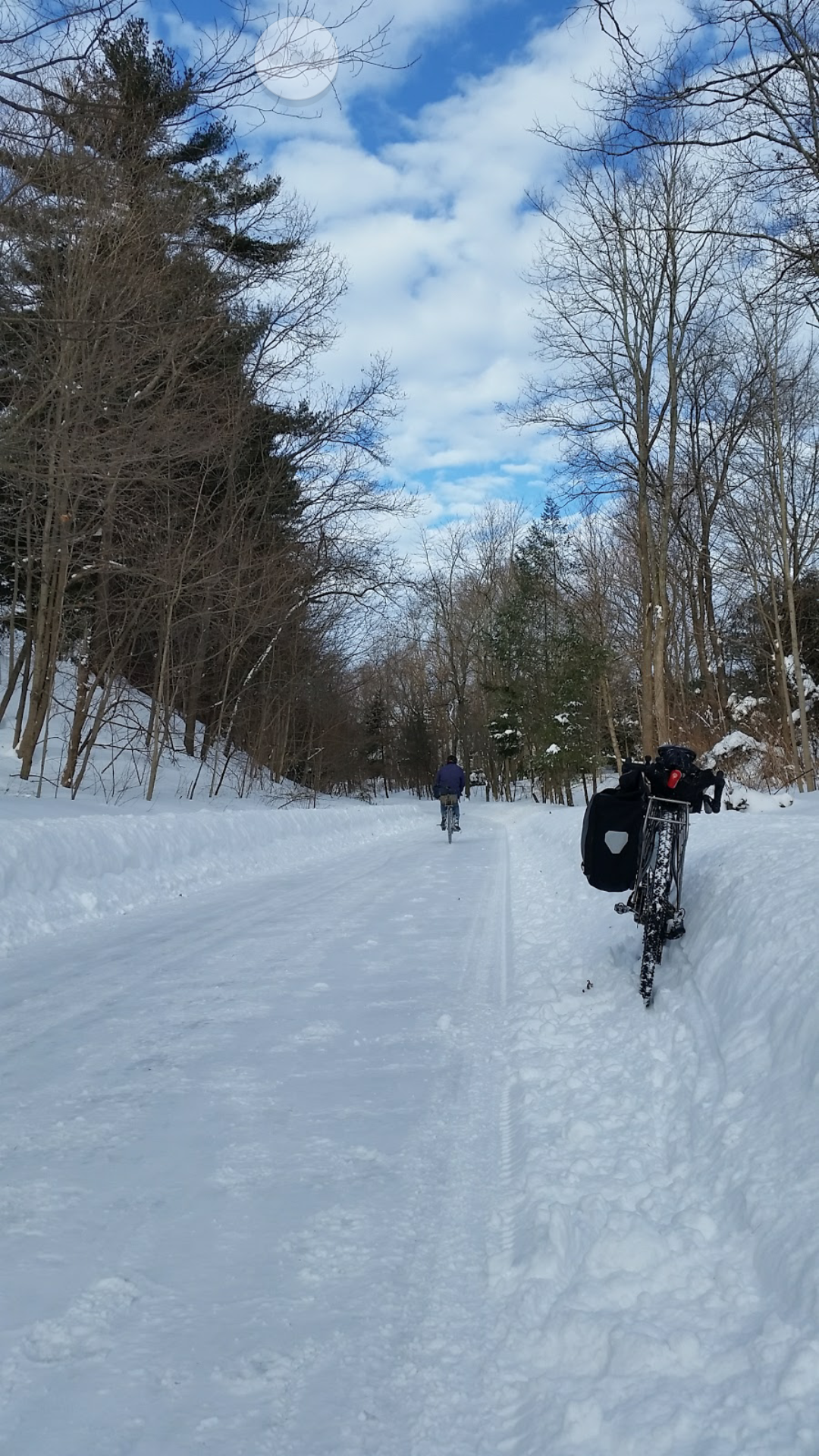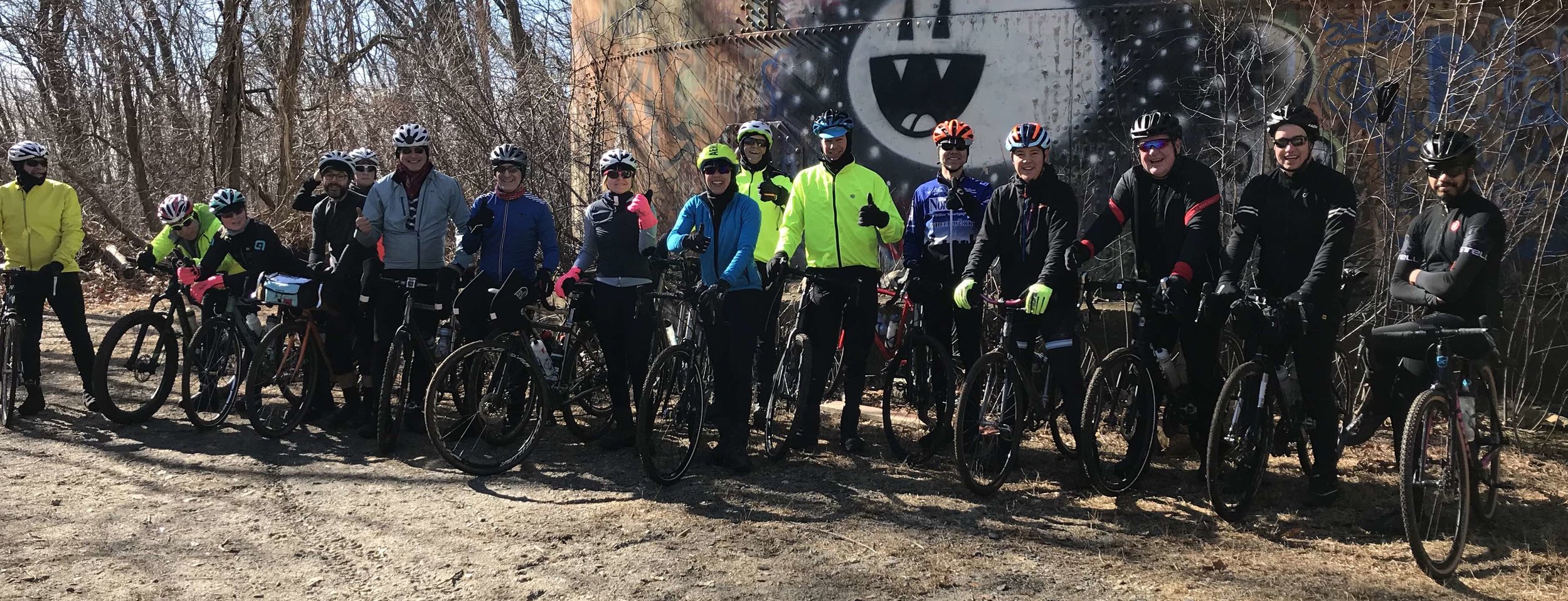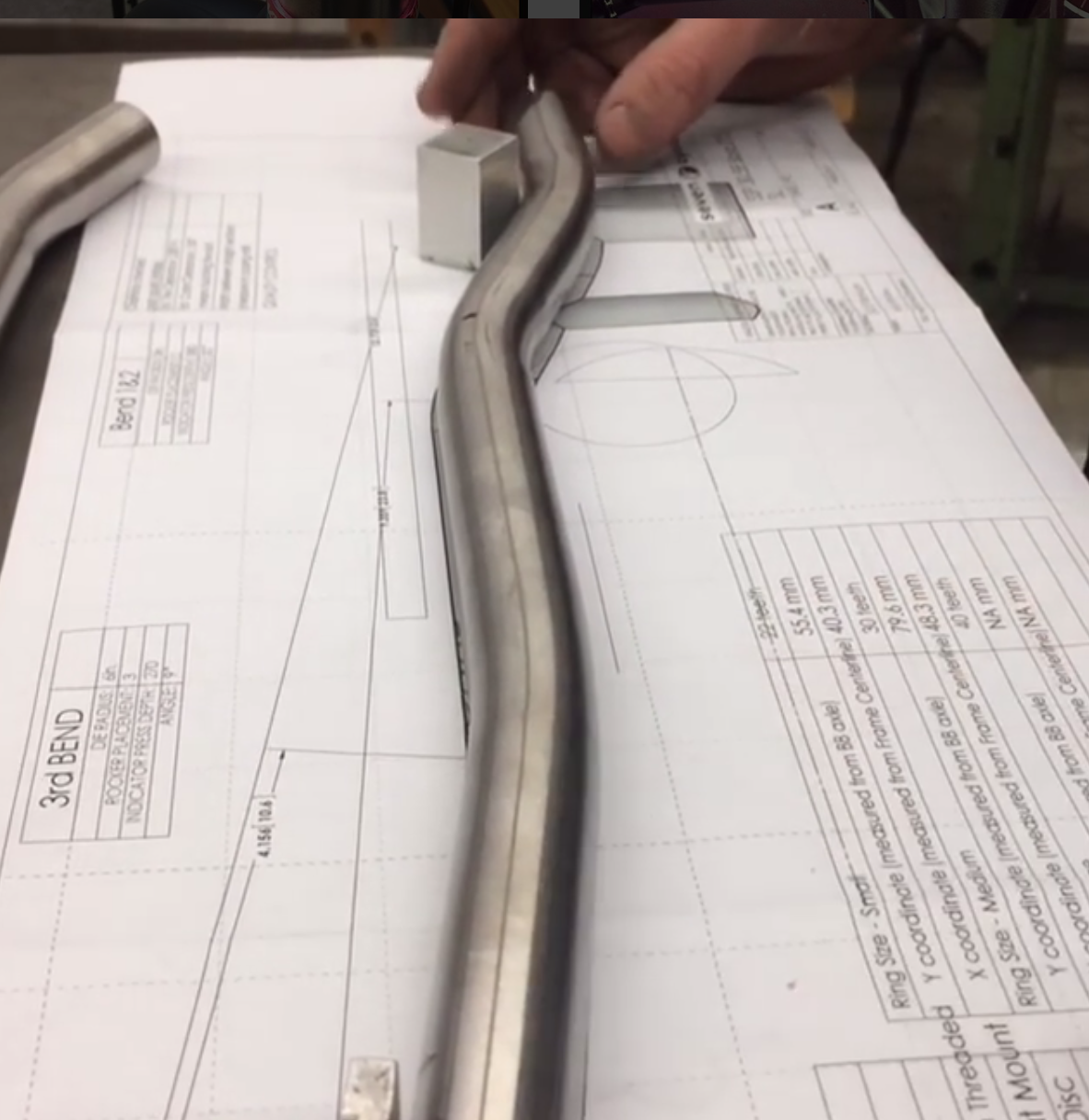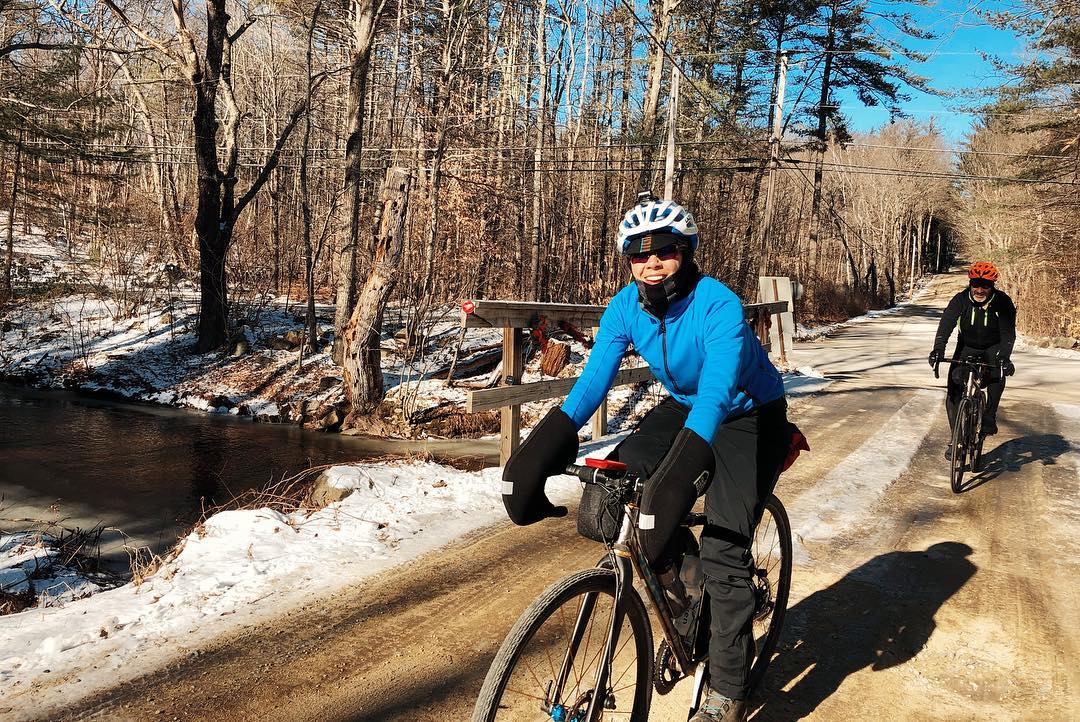We have been working with many people on new winter road bikes. There are a lot more of you out there who could benefit from a winter bike. Much of this article pertains to winter mountain and fat bikers, though we are focusing on bikes to be ridden mostly on the road.
Want to learn more about this or ask questions? We are hosting a Winter Cycling Clinic at Ride Headquarters this upcoming Wednesday, November 13 at 6pm, food starts at 6pm, the talk starts at 7pm.
The biggest problem with winter year after year, is that people wait to get cabin fever before getting ready for winter, and then it’s too late. Once it’s gotten underway, it’s hard to get started. Because some parts of the country get winter before us, winter gear sells out at our suppliers before our winter gets underway.
That’s why you need to move fast and get going now on making this winter the best one in your life.
A question for you is this: why do you ride or want to ride in the winter? This defines what bike you will want for winter. Here is an article about Why Ride in the Winter. It’s more comprehensive, if not motivational.
These are the main categories for the purposes of this article:
Maintaining fitness, getting a full-body workout, and not overdoing it on the trainer indoors
Getting to/from work. Warming up a cold car is far worse than commuting in the cold!
Fun - getting outside, breathing the crisp air, spending time with friends
Maintaining Fitness
For those who don’t want to let go of summer, and want to continue road riding, a winter bike is a great choice to stay outside, keep attending the group rides, and break up the monotony of being alone in the basement on the trainer. This article is for you.
Getting to/from Work - Commuting in the Winter
Most of what we’re writing here is for you, too. Commuting generally involves road and bike path miles. In much of what we’re discussing, it’s valid to draw the parallels of a winter bike to a commuting bike, as there are many similarities.
The Minuteman Commuter Bikeway is sometimes cleared after a snowstorm faster than Mass Ave. It’s still covered with snow and ice, but is a perfectly good place to ride in the winter with your studded tire bike.
Touching on the differences and thoughts for you:
Commuting means you are probably bringing stuff with you. For increased stability on wet and icy roads, you want a rack on your bike - use panniers and not a back pack. Drop your center of gravity.
Get rid of the back pack and move to waterproof panniers for the purposes of not having a sweaty back. It’s one thing to work up a sweat in the summer. It’s the coldest, grossest thing to have a sweaty back in the winter.
There are many hours of dark in the winter. We’d suggest considering a front wheel with a generator front hub (we build these frequently) for always-on lighting front and/or rear. Otherwise, outfit your bike with rechargeable lights like the Light and Motion Urban 1000. Be sure to have a back-up light and a good system to remember to recharge your lights.
You might consider a belt-drive bike with internal rear hub for the most weather-resistant drivetrain and the least maintenance needed over the winter. There are tradeoffs with this decision which we won’t delve into here, but know it’s a good option to consider, especially if you commute.
Fun
If you want to have fun, get off the road, stay warmer, and simply vary your cycling life by keeping your riding interesting, you might not know it yet, but you’re looking for a fat or mountain bike for your winter riding. We’ll write a separate article just for you.
Pure fun, pictured here. This was the Ride Studio’s first snow ride in 2018. Keep tabs on #rscfirstsnow for the next first snow ride for this season!
What your Winter Bike Is NOT
We’ve far too often seen people use their old bike as a winter bike. Using an old, rickety bike for the winter is a bad idea in so many ways. Safety is reason #1 for using a good bike, and appropriate bike, as your winter bike. Health is #2. These are different, in case you’re rolling your eyes. If you enjoy it, you will ride. Riding your bike = mental and physical health.
Old wheels are likely to break a spoke, old tires are likely to flat. Shifter cables are likely to snap. Mechanicals in the winter are not just horribly inconvenient, they’re dangerous.
Old bikes probably have rim brakes. These don’t offer the stopping power you need when it’s wet and icy. Old rim brakes are also terrible compared with modern rim brakes - so they’re worse than you might remember them being. Again: SAFETY is paramount to a good winter experience.
Old bikes don’t have tire clearances necessary for studded tires. If they do have the clearance, they probably have the wrong brakes. You need studded tires in New England for safe riding.
Old bikes that are being resurrected to be a winter bike are probably not tuned up. They’re loud, noisy, don’t shift well, the list is long. Really? You want to motivate yourself to ride, it’s cold and dark - and you’re about to get on a bike that makes riding miserable. Let’s see how long this winter riding lasts for you.
The Features a Winter Bike Has that Makes Winter Awesome
In no particular order, this full list of features and considerations are appropriate for almost every winter bike regardless of the goals of the rider.
Fender mounts on the frame and fork: You need to stay dry and keep the bike clean. New England winters involve a lot of melting/freezing. Full-time fenders are critical for your happiness, and the happiness of your bike. You’ll be amazed at how clean the bike is compared with your unfendered bike.
Note: if you like to ride trails and mixed terrain over the winter and not purely road, we’d recommend clip-on fenders, not full-time fenders and these don’t do as well on trails with twigs. Full-time fenders aren’t that hard to take on/off, so if you are primarily a road rider, taking them on and off isn’t a big deal. The initial installation (what we take care of for you) is what takes time and energy.
Seven cycles designs chainstays for proper tire clearances and ride qualities.
Tire clearances and space in the rear triangle of your frame and under the fork for both fenders and studded tires. It is critical to have enough space between your fenders and studded tires to not get snow packed between the two.
There is ice in the winter in New England and crashing on ice is the worst. Studded tires are miraculous to keep you upright on ice. There is no excuse not to ride studded tires with them being very accessible and inexpensive via offerings by 45NRTH. $60/tire versus a trip to the hospital?
Prioritize your position and your fit on the bike: We’re way over-simplifying this, but the short of it is this: You are wearing more clothes and they’re thicker and more restrictive, so your position should be less aggressive than your summer road position. You need a bike that allows you to sit up and not be as stretched out as your summer bike.
Don’t forget that you’ll be wearing gloves. Your shifting system should work optimally for you when you’re wearing gloves. You may be using pogies. Another conversation for another day. You want your hands to be warm and comfortable AND you want to be able to safely operate your bike.
You will be wearing boots so toe overlap could happen with a fender/wider tire. Your bike is likely to have toe overlap if you don’t manage this by way of getting a bike without it.
For those of you reading this who are thinking that you’ll be wearing shoe covers and riding right through the winter: approximately 5% of you will be able to get away with shoe covers. The rest of you will invest a small fortune in shoe covers via replacing them every time they wear out, and eventually you’ll end up with a pair of boots that stay good season after season. Skip the investment in shoe covers that do an incredibly inadequate job of keeping your feet warm and dry and just get invest in the good boots now.
Along with the bike fitting you well and mitigating toe overlap, it should have geometry for a more stable ride: The bike should have a slightly longer wheel base. You should not have to keep both hands on the bars to keep it going straight - that’s fatigue you don’t need over the winter (or possibly ever). This isn’t your race bike. It IS a good bike, but let it be appropriate for the riding you’re doing.
Wireless SRAM AXS shifting eliminates cables that can freeze up and are harder to actuate in the cold. Motors shift a bike regardless of the temperature. We ran a test, putting eTap batteries in the freezer overnight. There was no noticeable power loss on the batteries - so you can ride your electronic-shifting bike in the cold confidently.
Bike Components
The bike components should be optimized for the slop of winter and operating well in sub-zero temperatures. A few items to consider:
1 chainring vs 2 chainrings: No front derailleur and easier-to-clean chainring means it’s far easier to keep your drivetrain clean and fewer moving parts are fewer things to break, fewer adjustments needed, fewer things that can cause noise.
Disc brakes: braking power in the slop is better with disc and it saves your rims. Having fully enclosed brake housing keeps weather out. So much more can be said about disc brakes. We’ll save it for our in-store conversations together.
Chains, cassettes, and cranksets should be more budget-minded; they’re going to wear out faster than usual due to the grime you’ll be getting on your bike, so you might as well not invest much money in these parts. Put money into good shifters, derailleurs, and brake calipers.
This Evergreen has full-time matte black fenders, generator hub and light, along with reflective BLACK decals - photo taken with flash photography to illuminate the decals!
Electronic vs mechanical shifting. Each has its advantages when it is cold. Electronic is less affected by weather than mechanical.
With winter tires, boots on your feet, and simply the cold, don’t worry as much about how much your bike weighs. Slightly heavier wheels and components are often a little more durable than the lightest versions. You want to focus on durability in the winter.
Frame Material
Lest we leave this for last considering we sell more titanium frames built by Seven Cycles than any other bike shop on the planet. We know titanium bikes and can sing their praises all day long considering how happy titanium makes all kinds of riders.
Titanium is, by far and away, the best material for a winter bike for a long list of reasons. Titanium doesn’t rust, corrode, react to the environment, it’s light weight, has awesome ride qualities, it’s fun and lively. It can be built to suit every kind of rider, it can be stiffer than the stiffest carbon bike on the market, it can be lighter than the lightest carbon winterized bike on the market. It is durable, allows a standard threaded BB or threaded T47 BB to be used in it, saving the long list of problems associated with carbon bikes' pressfit bottom brackets, proprietary parts, and fragile nature.
All aluminum and steel components on all bikes corrode over time. The components on non-metal frames experience galvanic corrosion in a significant, especially damaging way. This is a problem in a salty, wet climate like ours. Know how you hear the loud creakiness of carbon bikes when you’re riding in the spring? There’s a lot of corroded parts on that loud, creaky carbon bike that wouldn’t be corroded if the frame were titanium.
After reading through this, don’t you want an awesome winter bike for yourself? The great news is that a winter bike often doubles as an awesome commuting bike and it is often very capable of gravel riding and mixed terrain riding. Work with us on your next winter bike and you’ll see how your life changes positively as a result of having a great winter bike to get you outside, keep your group riding continuing, and your exposure to the fresh air of winter.
Order a winter bike with us and you can be riding it in 4 weeks! Keep your summer motivation going into this cold time of year!
Winter Cycling Clinic
Learn a lot more: we are hosting a Winter Cycling Clinic at Ride Headquarters this upcoming Wednesday, November 13 at 6pm, talk starts at 7pm.
Check out how you can join the Chill Club to connect with other cold-weather riders and keep your motivation right through spring!
Come out to learn more and get motivated to stay outside on your bike!












